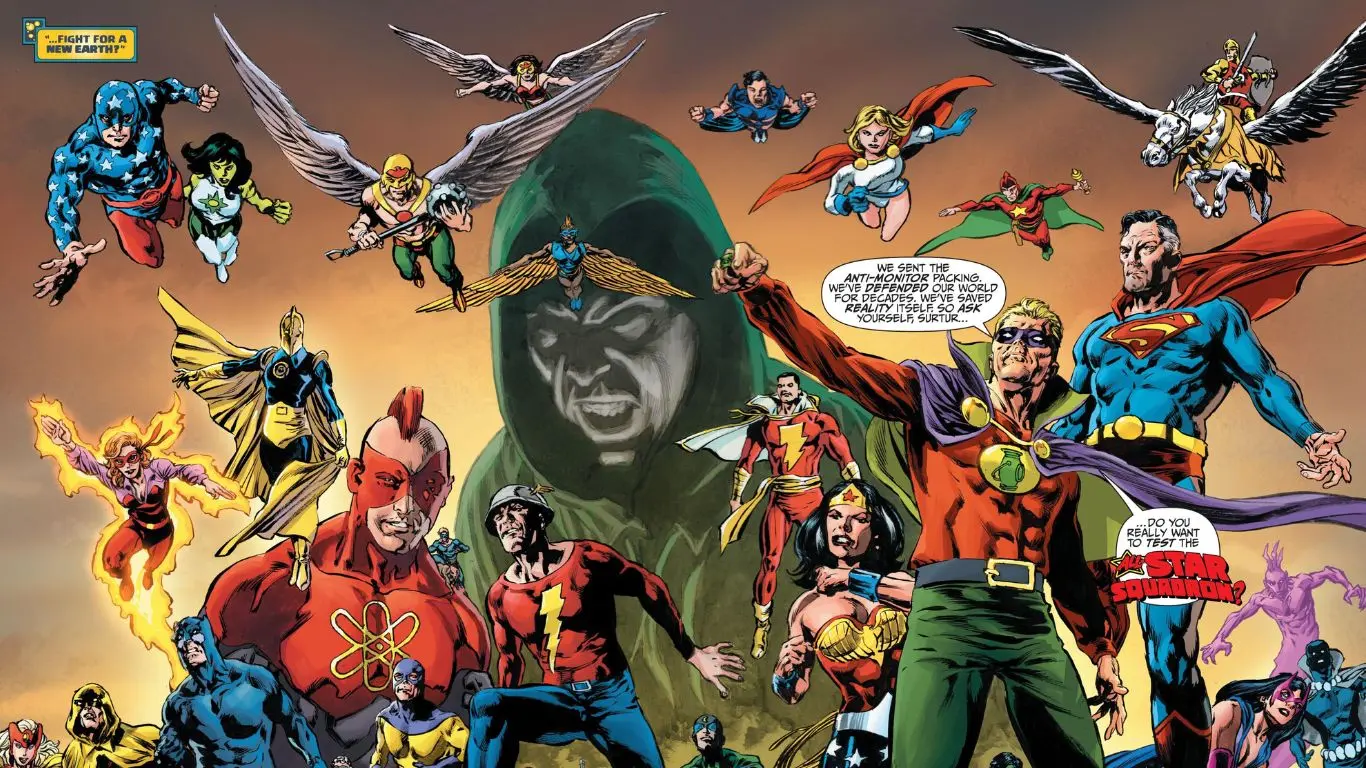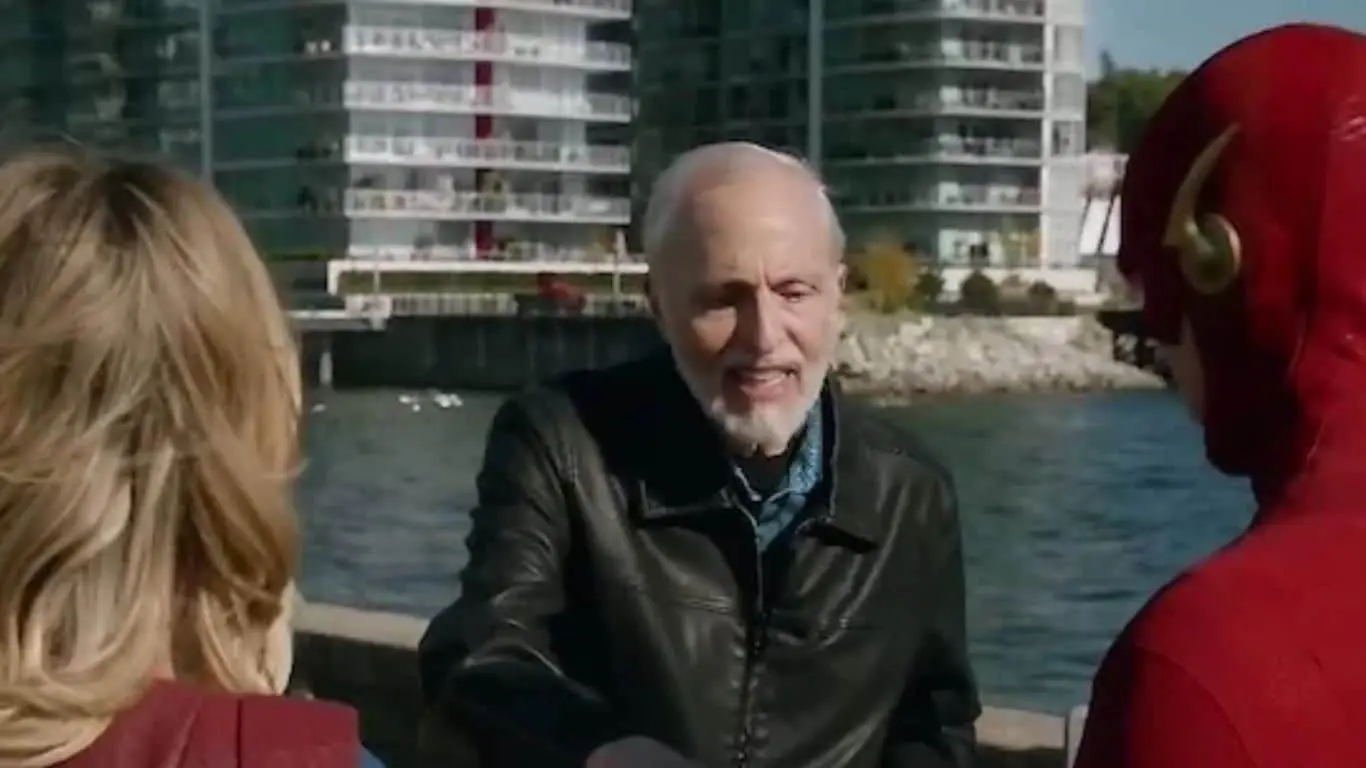The phrase “game-changer” is often tossed around in discussions about storytelling, but few works truly merit such a label as does DC Comics’ “Crisis on Infinite Earths.” Published between 1985 and 1986, this seminal 12-issue series did more than just shake up the status quo—it reinvented it, setting a new standard for comic book storytelling that continues to resonate nearly four decades later. From its sweeping scope that touched every corner of the DC Multiverse to the dramatic, permanent changes it enacted upon key characters and entire worlds, “Crisis” is the quintessential comic book event. It’s the yardstick by which all other comic events are measured, a masterclass in narrative ingenuity, emotional depth, and artistic prowess. In this article, we’ll explore the ten reasons why “Crisis on Infinite Earths” remains the pinnacle of DC’s events in comics, a legacy that endures in its ambition, execution, and lasting impact.
Why Crisis On Infinite Earths Remains the Pinnacle of DC’s Event in Comics
First Large-Scale Multiverse-Altering Event

“Crisis on Infinite Earths” holds a unique distinction as the first large-scale multiverse-altering event in comic book history. Before “Crisis,” event comics were relatively modest in scope and scale, typically confined to individual characters or teams. However, “Crisis” took the concept of an event comic to an entirely new level by affecting not just one world but an entire multiverse of worlds. It served as a reset button for DC’s complex continuity, streamlining various timelines and realities into a single, cohesive universe.
This was unprecedented at the time and set the stage for future high-stakes events in both the DC and Marvel universes. The sheer ambition of “Crisis” created a template for how to successfully execute a story with galaxy-spanning repercussions, making it a landmark in the comic book industry.
Visiting Every Era of DC History
One of the most remarkable aspects of “Crisis on Infinite Earths” is how it serves as a travelogue through the rich tapestry of DC Comics history. From the primordial days of Anthro the caveboy to the Knights of the Round Table in Arthurian legends, from the Golden Age heroes of Earth-2 to the grim future of Kamandi, the storyline intricately weaves disparate timelines and universes into a singular narrative. It doesn’t just limit itself to the well-known characters; it embraces the obscure and the overlooked, bringing them into the fold in meaningful ways.
For long-time fans, it’s a nostalgic journey; for new readers, it’s a tantalizing introduction to the broader DC multiverse. In doing so, “Crisis on Infinite Earths” serves as both an homage to and a consolidation of decades of storytelling, making it a must-read for anyone interested in the lore of DC Comics.
Unmatched Stakes
The stakes in “Crisis on Infinite Earths” are truly unparalleled, both in the magnitude of the threat and the cost of failure. It’s not just a city or a planet at risk—it’s all of existence, every dimension, every timeline, and every version of every character that fans had come to know and love. From the very beginning, the event pulled no punches, dispatching the Crime Syndicate of Earth-3 in a matter of moments, making it abundantly clear that no one was safe. As the story progresses, iconic characters like Supergirl and Barry Allen (The Flash) meet tragic ends, marking a definitive end to their respective eras.
This sense of gravitas and urgency is something that modern events often struggle to match. The risk of universal annihilation lent the characters’ choices real weight and consequence, heightening the tension in an unprecedented way. All this made “Crisis” not just another crossover event but a watershed moment in comic book storytelling.
The Wolfman-Pérez Team

The creative genius behind “Crisis on Infinite Earths” came from one of the most iconic partnerships in comic book history: writer Marv Wolfman and artist George Pérez. This dynamic duo had already proved their mettle with the blockbuster success of “The New Teen Titans,” and were the natural choice to tackle a story of such monumental importance and complexity. Wolfman’s narrative mastery and Pérez’s intricate, detailed artistry were perfectly in sync, providing a balanced blend of compelling storytelling and stunning visuals. Their mutual love and encyclopedic knowledge of the DC Universe shines through every page, making “Crisis” a love letter to fans and a masterclass in comic book creation.
Wolfman crafted a story of unparalleled emotional and narrative depth, while Pérez brought it to life with visuals that were as expansive as they were intricate. Together, they not only reset the DC Universe but also set new standards for what comic book events could and should be. Their collaboration on “Crisis” remains a high watermark in comics, illustrating what can be achieved when two masters of their craft come together for a single, groundbreaking vision.
Emotional Core
The emotional depth of “Crisis on Infinite Earths” distinguishes it from many other comic book events. Amidst the chaos and grandeur of cosmic battles, the story never loses sight of the emotional stakes for its characters. Whether it’s the gut-wrenching deaths of beloved heroes like Barry Allen and Supergirl, or the lesser-known tragedies like the destruction of Lady Quark’s family, each moment is crafted to evoke emotional responses that resonate deeply with readers.
Even long-standing villains are portrayed with shades of pathos, adding layers of complexity to the story. This emotional core gives weight to the astronomical stakes of the event, making it not just a spectacle but a profoundly moving experience. Unlike many modern events that may rely on shock value, every emotional beat in “Crisis” feels organic and earned, imbuing the narrative with a sense of gravitas that has helped it endure as one of the most impactful stories in comic book history.
Death of the Silver Age Embodiments

The demise of iconic characters like Barry Allen’s Flash and Supergirl in “Crisis on Infinite Earths” served as more than just shocking plot twists; they symbolized the end of an era. Barry Allen’s first appearance had launched the Silver Age of comics, a period defined by a blend of optimism, innocence, and fantastical storytelling. Supergirl embodied similar themes, representing the more whimsical and eccentric elements of Silver Age Superman stories. Their deaths were not mere casualties in a high-stakes war; they were a conscious effort by the creators to signal the end of the Silver Age and usher in a new, darker, and more complex era of storytelling, in line with works like “Watchmen” and “The Dark Knight Returns.”
By killing off these embodiments of the Silver Age, “Crisis” made a bold statement about the evolution of comics, illustrating that the medium was ready to tackle more mature and complicated narratives. It was a transformative moment that had lasting implications, setting the stage for the modern age of comic books.
Stars the Greatest Heroes of Every Age
“Crisis on Infinite Earths” is a tour de force that showcases the best of what DC Comics has to offer, featuring an all-star cast of heroes from every era of the publisher’s history. Whether it’s the Golden Age legends like Earth-2 Superman and the Justice Society, Silver Age icons like Earth-1 Superman and the Justice League, or even newer teams like the New Teen Titans and Batman and the Outsiders, “Crisis” encapsulates the rich tapestry of DC’s storied past. This inclusivity serves as an ultimate tribute to the fans, while also making the event a crucial touchstone for understanding the DC Universe.
It’s a celebration of the genre itself, reaching into the far corners of the DC Multiverse to bring together a truly epic assembly of characters for a storyline of unparalleled scope. The climax even allows Earth-2 Superman, one of the first superheroes, to deliver the final blow against the Anti-Monitor, encapsulating the story’s reverence for its own history. This grand convergence of heroes makes “Crisis” an unforgettable experience that has yet to be matched in scale or impact.
The Anti-Monitor as the Perfect Event Villain
The Anti-Monitor serves as the quintessential event villain in “Crisis on Infinite Earths,” embodying an existential threat that requires the combined might of the DC Universe to confront. His sheer malevolence and cosmic power make him more than just an antagonist; he’s a cataclysmic force of nature whose mission to obliterate the Multiverse sets the stakes as high as they could possibly go. Unlike villains who offer intricate motivations or complex psychology, the Anti-Monitor’s straightforward, universe-ending agenda is exactly what an event of this magnitude calls for. His delayed reveal only amplifies the tension, initially existing as a malevolent shadow orchestrating chaos across multiple worlds.
When he finally appears, it’s a momentous event in itself, living up to the immense build-up. In many ways, the Anti-Monitor has become the standard by which other event villains are measured—powerful enough to necessitate an alliance of nearly every hero and villain, and straightforward in his evil to keep the focus on the heroes and the stakes at hand.
Excellent Covers

The covers of “Crisis on Infinite Earths” are not just eye-catching; they are iconic pieces of art that encapsulate the drama, scale, and significance of the story within. In an era where comics jostled for attention on crowded newsstands, the covers for “Crisis” stood out and commanded the gaze of potential readers. From the haunting string of doomed Earths in space to the dynamic ensemble of heroes and villains battling the cosmic threat of the Anti-Monitor, each cover serves as a mini-narrative, setting the tone for what readers could expect inside.
These covers did more than just sell the comic; they became cultural touchstones, instantly recognizable and often imitated but never duplicated. They drew in readers new and old, conveying a sense of urgency and grandeur that perfectly aligned with the story’s epic scope. In an industry where the phrase “don’t judge a book by its cover” often applies, “Crisis on Infinite Earths” is a notable exception; the excellence of its covers accurately reflects the groundbreaking content within.
Lasting Legacy
The lasting legacy of “Crisis on Infinite Earths” is unparalleled in the realm of comic book events. Not only did it set the standard for large-scale, multiverse-altering storylines, but it also became a touchstone to which subsequent events are compared, often aspired to, but rarely surpassed. Its influence is felt in numerous sequels, reboots, and homages within the DC Universe and beyond. Characters, concepts, and even entire realities were significantly impacted by the events of “Crisis,” offering a new foundation upon which DC would build its future narratives. This wasn’t just a story that concluded when the last page was turned; it had lasting implications, changing the status quo of an entire fictional universe.
Its scope and audacity have made it a perennial subject of discussion, critique, and reverence. “Crisis” doesn’t just live on through the stories it inspired; it endures as a pivotal moment in comic book history, a benchmark for what the medium can achieve when it aims for the highest stakes.
Also Read: How Comic Book Superheroes Are Breaking Stereotypes and Promoting Diversity





